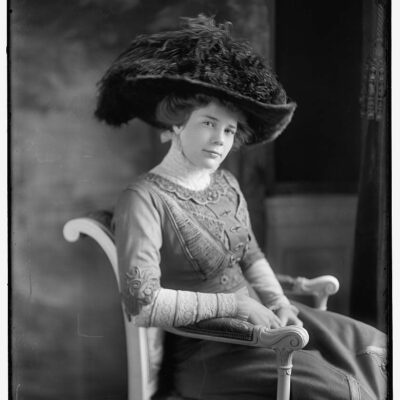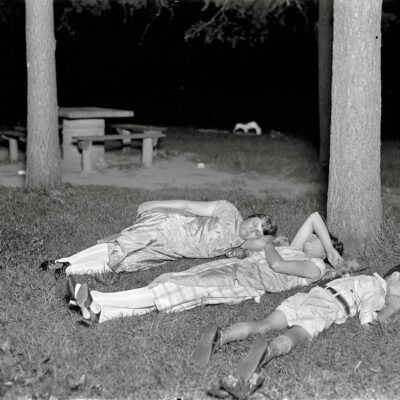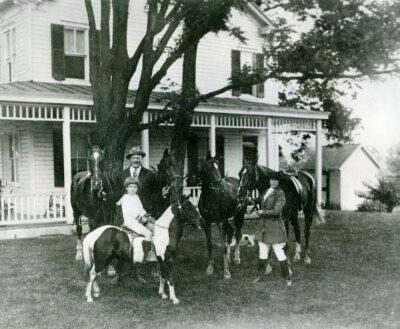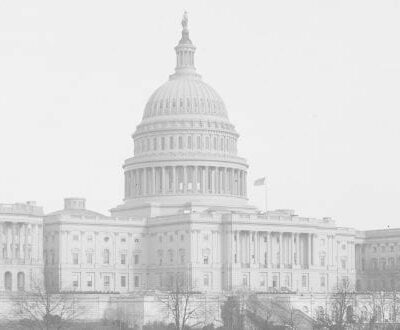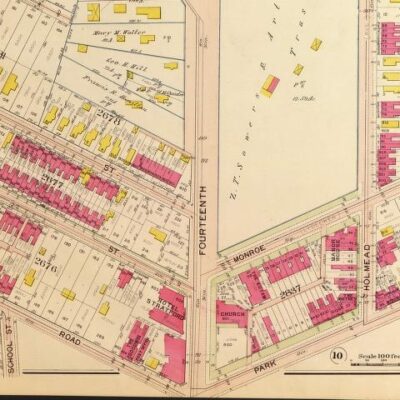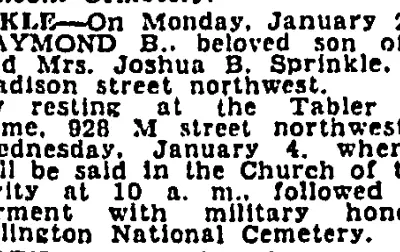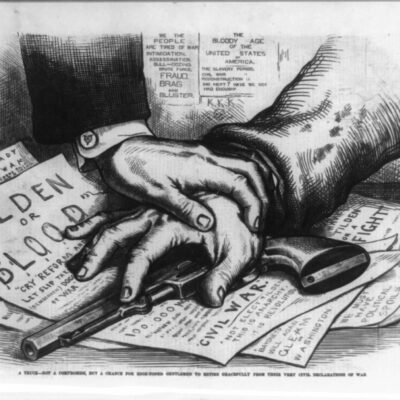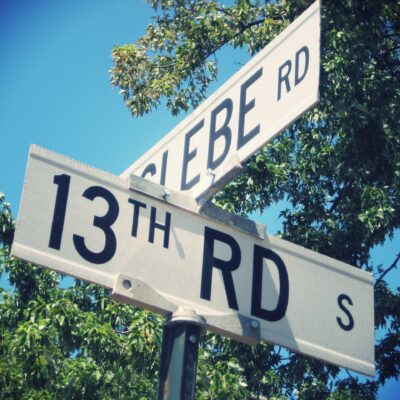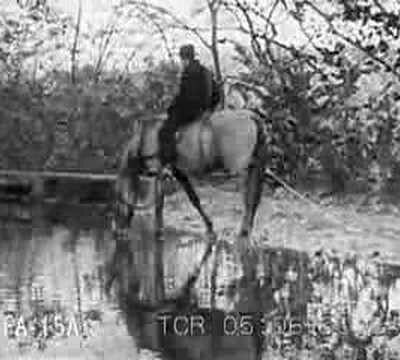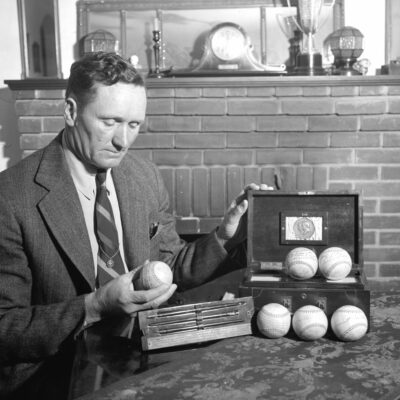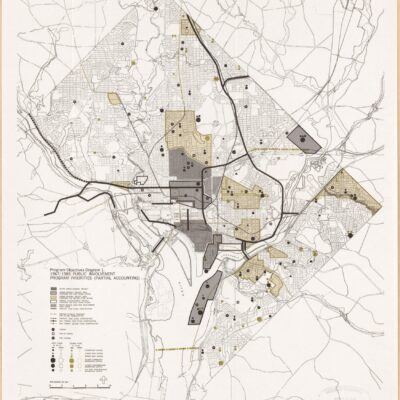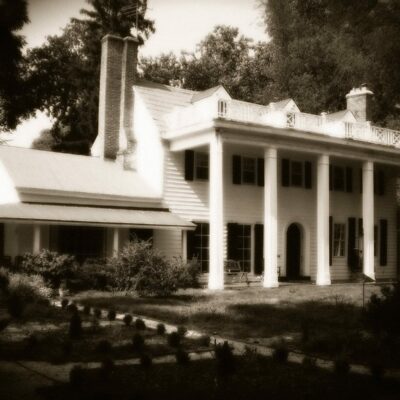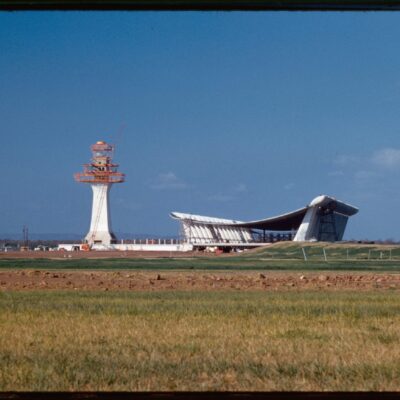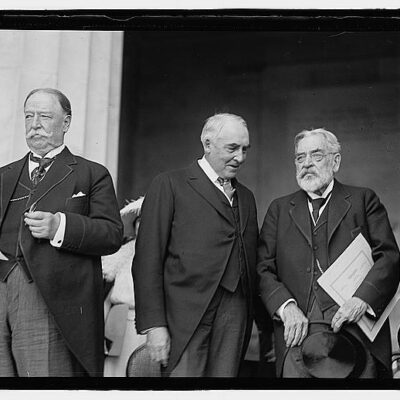To satisfy your hunger for more Officer Sprinkle, I took a look into where he lived in 1900. At the time, he was 34 years old, had been married to his wife Teresa for 10 years and had been working for the Washington police force for the same amount of time.
The Sprinkle family lived at 1320 Florida Ave. NE, in the Trinidad neighborhood, just outside of the boundary of old Washington city. Zillow states that the home was built in 1900, although the accuracy of that is debatable because I came across a few old city directories listing the family at the residence in the late 19th century.
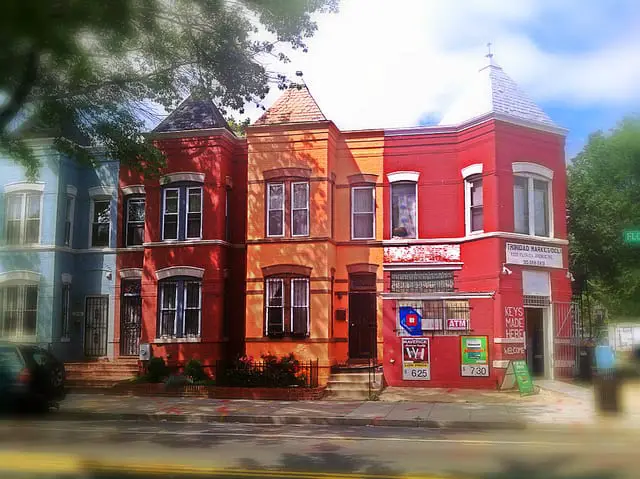
Joshua lived there with Teresa, 32, and his children, a daughter Alma, 7, and three sons, Clarence, 5, Raymond, 3, and Joseph, 1. The family owned the home, but had an outstanding mortgage that they were working to pay off.

The neighborhood they moved into was pretty sparsely populated, and just starting to develop. Most of the lots along Florida Ave. were being developed with row houses and a few with an accompanying barn in the back. Once you went one block into the neighborhood, the vast majority of the lots were yet to be developed.
Below you can check out the 1903 Baist real estate atlas of Washington, outlining the neighborhood. Pink structures are brick and yellow structures are frame houses (click here to see a legend). The map below is meant to show the neighborhood, not his house, although you can barely make it out at the bottom right, where Florida interests Trinidad (click here for a zoomed in view).
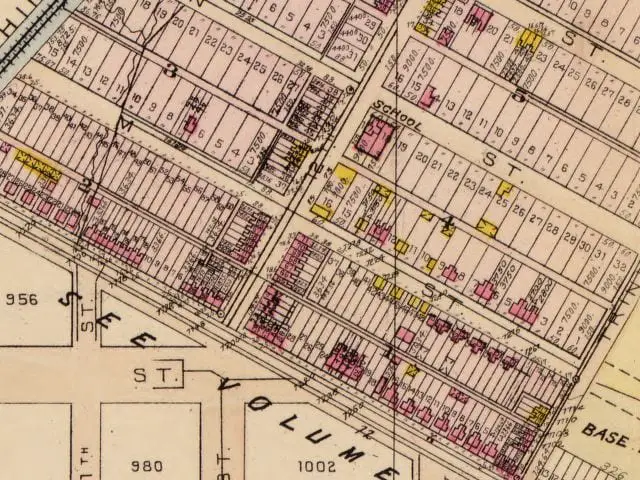
The neighborhood had several dozen brick row houses, a school a couple blocks from the Sprinkle residence and baseball grounds on the site of the Washington Brick Machine Company, just across Trinidad Ave.
Within walking distance, up Florida Ave. was The Columbia Institution for the Deaf and Dumb (now Gallaudet University). At the end of Trinidad Ave., you would run into Mount Olivet Cemetery. At the confluence of Maryland Ave., Florida Ave. and H St. was a large tract of land owned by the Graceland Cemetery Company.
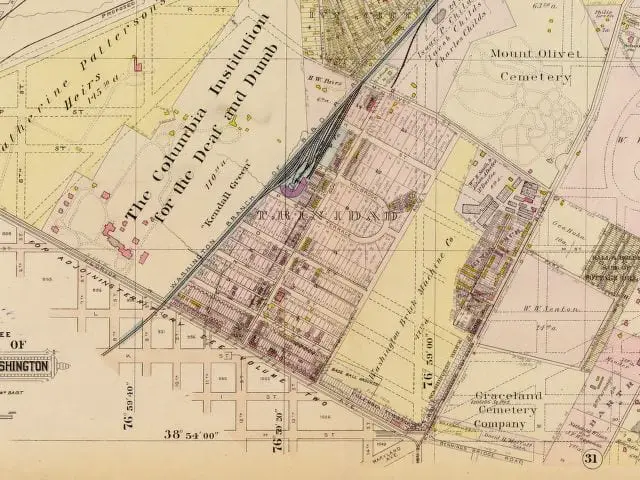
By 1907, the area was slowly beginning to develop into a nice suburb of the city. It was also around this time when the Sprinkle family moved up to the Brightwood area, presumably to the more spacious and cooler temperatures available in the newer suburbs well past Meridian Hill.
The Baist real estate atlas from that year clearly shows the Sprinkle home at the bottom right, the second from the corner. you can also see that several brick row houses had started to fill in the block behind them.
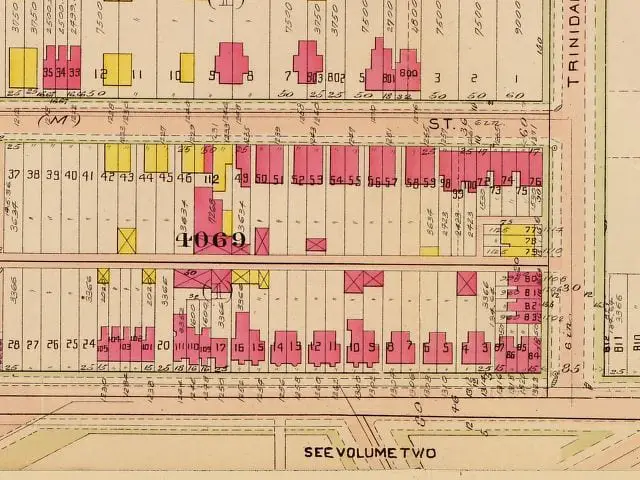
About twenty houses down — 1236 Florida Ave. — from the Sprinkle’s lived Edward J. Wall, 47, his wife of 16 years, Nellie, 40, and their teenage daughter Grace, 15. Edward was also a member of the Washington police force. The Wall family owned their home without a mortgage. Officer Wall was born in D.C. to Irish parents. Nellie was originally from New York.
Not only did they share the same employer, they shared an important day in their law enforcement careers. On August 30th, 1890, the Washington Post reported that the same day Joshua Sprinkle was hired as a police officer in the District, Edward was promoted to sergeant.

Another police officer lived between these two at 1312 Florida Ave. John A. Boyce was 39 years old and had been married for 10 years to his wife Annie, 30 years old. They had two daughters, Lina, 8, Annie, 8, and a son Andrew, 3. Their home was also owned, but with a mortgage on it.
The Sprinkle kids and the Boyce kids were definitely running up and down Florida Ave. playing with each other.

Boyce had an interested article mention him back on November 24th, 1908. A teenager, working for Hamilton Dairy, was speeding down 15th St. NW on his bicycle, approaching H St. Teddy Roosevelt was crossing the street with two secret service agents tailing him. The boy narrowly missed the president and a visibly agitate Roosevelt threw his arms up in the air in anger. The article goes on to mention Boyce’s involvement.
When President Roosevelt returned to the White House, after attending services at St. John’s Church, Sixteenth and H streets northwest, one of the secret service men, accompanied by Sergt. John A. Boyce, of the Second precinct, went to the dairy and arrested Gilbert Boyer, aged 19, of 61 G street northwest. The boy was taken to the station house, charged with “not having suitable bell on bicycle,” and subsequently was released on $5 collateral. When his name was called in police court yesterday Boyer failed to respond, thus forfeiting his collateral.
“I didn’t know it was the President,” said Boyer yesterday to a Post reporter. “He looked just like other men to me. I was carrying a basket of milk bottles in one hand, and it was hard for me to get along. I couldn’t have rung a bell if I had had a gong on the wheel. When I saw that I was going to run into the man I yelled and he jumped back just in time to keep from being hit. His glasses danced on his nose and he looked mad. He opened his mouth, but I don’t know what he said, for I was getting away.
Make sure you look both ways when you cross the street Mr. President.
Sharing a wall with the Sprinkle’s was the Liomin family in 1322 Florida Ave. George W. Lioman was 38 years old and married for 8 years to his wife Margaret, 32. They were originally from New York and had moved down within the last few years so George could work as a book binder. They had three children living with them, two daughters and a son. Loretta, 5, was the oldest and born in New York. The other two, William, 2, and Marguerette, 1, were both born in Washington. They also had a boarder living with them, Teresa Leahy. Teresa was 38 years old, originally from the District and married for 10 years, although her husband was not listed in the house with them. The Lioman’s were renting their home on the corner of Florida and Trinidad.

On the other side of the Sprinkle house was the Aiken family in 1318 Florida Ave. Matthew Aiken was Irish and 68 years old, having arrived in the country 35 years ago in 1865 and at this point was a naturalized American citizen. His occupation was listed as day laborer. His wife of 19 years, Mary, was 51 years old and originally from Virginia. In the home with them, they had two daughters, Margaret, 14, and Mary, 11. A final occupant of the home was an elderly 84-year-old Irish woman named Margaret Connolly who had arrived in the country 50 years ago, but was not listed as a citizen.

Just around the corner at 1102 Trinidad Ave. lived the Blakes, William, 60, and Mary Ann, 46. They had been married for 18 years, and William was Mary Ann’s second husband (divorce, widow, I’m not sure). Mary Ann’s daughter Angelina Carrigan, 26, was living in the home with them and was the only one employed in the house. She was a folder working at the Government Printing Office. William was listed as a retired soldier, I’m guessing a Civil War veteran. He was Irish and had arrived in the county 50 years earlier when he was just 10 and became a naturalized citizen.

The rest of the surrounding neighborhood was comprised of about half District natives and the rest coming from New York, Pennsylvania, Ireland, Germany, Maryland and Virginia. Each household had a prime income earner, with a couple houses where the wife also worked. The occupations ranged from the police officers listed above, to butchers, printers, bakers, numerous Government Printing Office workers (who probably worked with Annie O’Connell’s father), a stenographer, a tanner, day laborers and rounding it out with a handful of day laborers. It seemed like a very regular middle-class neighborhood for the early 20th century.
I thought it was pretty cool to bike by the house last weekend to snap a few photos. I think we need to petition to get a plaque on the house in honor of Officer Sprinkle.
Related articles
- Move to Cathedral Highlands: An Unobstructed View of the Entire Surrounding Country
- Arnold’s India Pale Ale: The Invalid. The Convalescent. The Entirely Well. It Does Them All Good.
- Officer Sprinkle, Opium, Murder, Suicide, Herbert Hoover, Chuck Berry, Jerry Lee Lewis, Springsteen and Washington Senators Baseball … What a Week!
- Least Expensive: The Ten Least Expensive Properties in Trinidad (dc.curbed.com)
- If Walls Could Talk: Smith Commons
- A “Bomb” is Found and Officer Sprinkle Saves the Day
